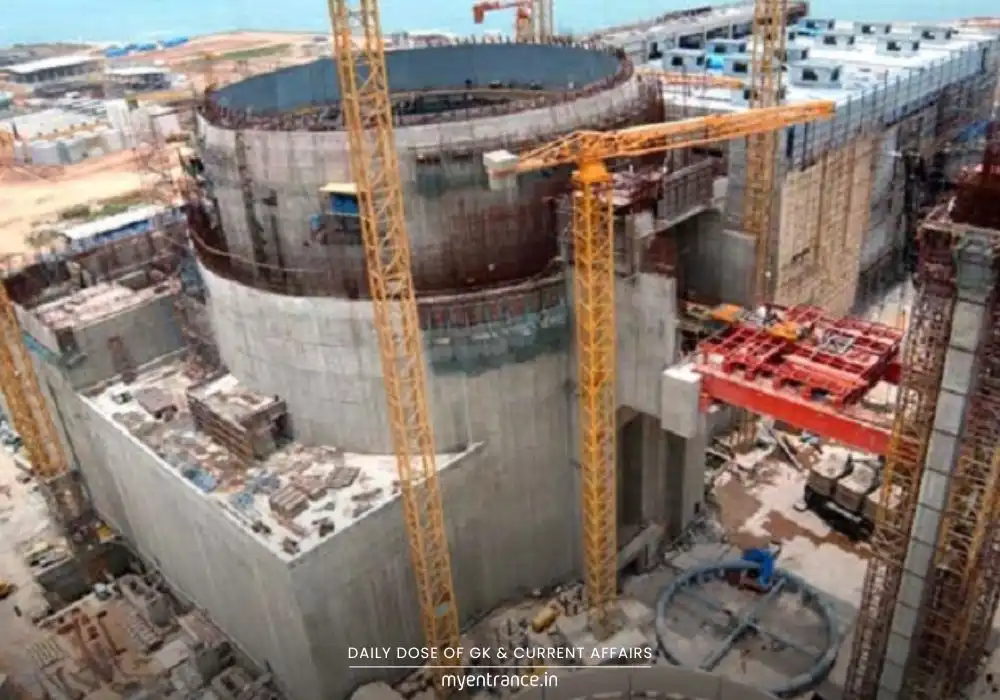Select Language
Cloudbursts, Chaos & Consequences: Decoding the Himachal Disaster for Competitive Exams
Mastering current affairs like the recent Himachal flash floods is key for easy preparation and excelling in competitive exams. This complete guide breaks down the complex geography behind the tragedy, making online preparation effective and showing why myentrance.in is the best site to learn targeted exam content.

Why is Understanding the Himachal Flash Floods Important for Exams?
This tragic event isn’t just news; it’s a direct case study for multiple competitive exam syllabi:
Prelims (SSC, PSC, UPSC etc.): Tests knowledge of Indian and World Geography – Physical Geography, specifically phenomena like cloudbursts and flash floods, and the unique geographical features of regions like the Himalayas.
Mains (UPSC GS I): Directly covers Important Geophysical phenomena (cloudbursts, flash floods), changes in critical geographical features (impact on water bodies, slopes), and their effects. It also touches upon disaster management challenges in fragile ecosystems like Himachal.
Environmental Awareness: Exam bodies increasingly focus on ecological challenges and sustainable development, making Himachal’s vulnerability a significant topic.
The Story: Himachal Flash Floods Claim 5 Lives
The serene mountains of Himachal Pradesh turned treacherous this week as flash floods, triggered by intense cloudbursts, swept through Kangra and Kullu districts. The death toll has risen to five, with search operations ongoing for several missing individuals.
Key Details:
Three bodies were recovered in Kangra district on Thursday, adding to the earlier fatalities.
Four victims have been identified: Chain Singh (J&K), Aditya Thakur (Chamba), Pardeep Verma and Chandan (both UP).
Search efforts, aided by NDRF teams, continue for three missing persons in Kullu’s Sainj valley and three others linked to a Kangra hydro project site.
The floods highlight the extreme vulnerability of the Himalayan state during intense monsoon weather.
Unpacking the Key Geography Concepts (Crucial for Exams):
What is a Cloudburst?
Technically, it’s defined as rainfall exceeding 10 cm (approx. 4 inches) within one hour over a localized area of roughly 10 km x 10 km. It’s an extreme form of precipitation, not just “heavy rain”.
Why Do Cloudbursts Happen (Especially in Hills)?
The primary cause is orographic lift. Warm, moist air is forced upwards when it hits mountain ranges like the Himalayas. As this air rises, it expands and cools, causing the moisture it carries to condense rapidly into clouds and rain.
In intense situations, a continuous feed of warm, moist air prevents the rain from falling steadily. Instead, it builds up dramatically within the cloud system until it’s released in a sudden, violent downpour – the cloudburst.
How Common are Cloudbursts & Why Himachal?
Cloudbursts are relatively more frequent in mountainous regions globally due to orographic lift. Himachal Pradesh, nestled in the fragile Himalayas, is particularly susceptible because:
Its steep slopes force rapid air ascent.
Its complex terrain channels rainfall quickly into streams and rivers.
Climate change may be increasing the frequency and intensity of such extreme weather events.
Can We Predict Cloudbursts?
Predicting the exact location and timing of a cloudburst with current technology is extremely difficult. Their highly localized nature (over that ~10×10 km area) makes them hard to capture accurately with standard weather radar and models. Forecasts can warn of the potential for very heavy rain in a region, but pinpointing a cloudburst remains a challenge.
What is Flash Flooding?
A flash flood is a rapid and extreme surge of water, typically occurring within minutes or hours of intense rainfall (like a cloudburst) or a dam/levee failure. It happens when the ground or drainage systems cannot absorb the water quickly enough.
Why Hills are Vulnerable: Rocky terrain and steep slopes in hilly areas have low water absorption capacity. Rainwater runs off almost immediately, gathering volume and speed as it flows downhill, causing sudden, destructive torrents in valleys and riverbeds. While less damaging to property than prolonged river floods, flash floods are far more dangerous for human life due to their speed and unpredictability.
Why is Himachal Pradesh Ecologically Fragile?
Young & Unstable Mountains: The Himalayas are geologically young and seismically active, making slopes inherently unstable.
Heavy Rainfall & Erosion: Intense monsoon rains accelerate soil erosion and weathering.
Deforestation & Land Use Change: Loss of forest cover reduces soil binding and water retention capacity.
Unplanned Development: Construction (buildings, roads, hydropower projects) often disregards geological constraints, destabilizing slopes and altering natural drainage.
Climate Change Impact: Glacial melt, changing precipitation patterns, and increased frequency of extreme events exacerbate existing vulnerabilities.
The Hydropower Challenge (RoR Projects):
Run-of-the-River (RoR) Projects: These generate power by diverting river water through a tunnel, bypassing a natural stretch of the river, before returning it downstream. They have smaller reservoirs than traditional dams.
Issues in Fragile Himalayas:
Tunneling & Blasting: Weakens hill slopes, increasing landslide risk.
Muck Disposal: Improper disposal of excavated debris blocks streams and valleys, becoming hazardous during floods.
Altered River Flow: Affects local ecology and sediment transport.
Disaster Vulnerability: Infrastructure is susceptible to damage from landslides and flash floods, as seen recently.
Key Concerns Raised (Highly Relevant for Himachal too):
Projects often ignore carrying capacity and ecological fragility.
Uncontrolled slope cutting without adequate stabilization causes landslides.
Improper debris management blocks rivers and valleys.
Emphasized the need for environmentally sensitive development prioritizing long-term stability over short-term gains in the Himalayas.
Sample Exam Questions & Answers:
Q: What specific geophysical phenomenon, characterized by rainfall exceeding 10 cm/hour over a small area, recently triggered deadly flash floods in Himachal Pradesh?
A: Cloudburst.
Q: Explain the primary meteorological process that makes Himalayan states like Himachal Pradesh particularly prone to cloudbursts.
A: Orographic Lift. Moist air is forced upwards by the mountains, cools rapidly, condenses, and can lead to extremely intense, localized rainfall if the updraft is sustained.
Q: Why are flash floods especially dangerous and common in hilly regions compared to plains? (Mention two key reasons)
A: (1) Steep slopes and rocky terrain lead to very rapid surface runoff with minimal absorption. (2) This runoff quickly gathers volume and speed in narrow valleys, creating sudden, destructive torrents.
Q: Identify one major ecological challenge highlighted by the vulnerability of Himachal Pradesh to disasters like flash floods and landslides.
A: Ecological Fragility due to young, unstable geology, intense erosion, deforestation, and the impacts of climate change. (OR) Challenges of unplanned development disregarding carrying capacity.
Q: What significant concern regarding developmental projects in Himalayan states was raised by the Supreme Court-constituted Ravi Chopra Committee?
A: The committee highlighted that many projects ignore environmental fragility and carrying capacity, leading to uncontrolled slope cutting, improper debris management, and increased landslide/disaster risk, necessitating more sustainable development practices.
How to Prepare for Geography & Current Affairs in Entrance Exams:
Tackling geography and current affairs for exams like SSC, PSC, UPSC, NDA, or state services requires a strategic blend of understanding core concepts and applying them to real-world events. Simply memorizing facts isn’t enough.
Focus on Syllabus Links: Always connect current events (like the Himachal floods) back to the specific topics mentioned in your exam syllabus (e.g., Geophysical phenomena, Indian Geography, Disaster Management).
Understand Causes & Effects: Don’t just note the event; delve into the why (orographic lift, fragility) and the consequences (loss of life, infrastructure damage, ecological impact).
Practice Application: Use case studies like this one to answer “explain” or “discuss” type questions. How does this event illustrate concepts like cloudbursts or Himalayan vulnerability?
Prioritize Key Terms: Master definitions (cloudburst, flash flood, orographic lift, RoR project, ecological fragility) – these are direct question fodder.
Leverage Reliable Predictions: Covering every news item is impossible. Focus your energy on events most likely to be asked.
The most predicted questions provided by myentrance.in are the perfect place to streamline this preparation. Our experts meticulously analyze syllabus trends and current affairs to pinpoint the highest-yield topics and potential questions, ensuring you study smarter, not harder. Get access to focused content, practice questions, and insights tailored specifically for your exam success.
Most Predicted Questions
Comprehensive study materials, Expert-guided tips & tricks, Mock tests and instant results.
Start your SSC, NIFT, NID, FDDI, PSC journey today with MyEntrance, your ultimate online coaching platform.















